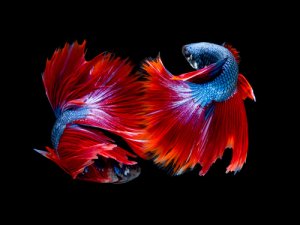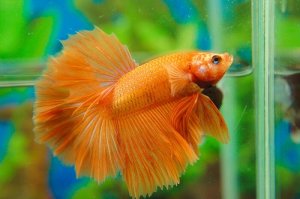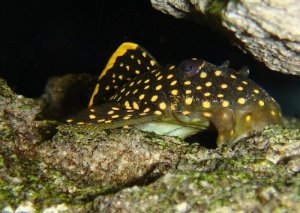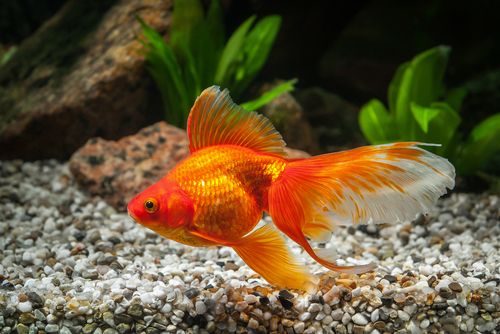
Breed Overview
| Origin | China |
| Lifespan | 10-15 years (if well looked after) |
| Size | 6-8” or 15-20 cm |
| Colour | Bright orange-gold |
| Food | Omnivorous |
| Tank Size | Minimum 20-30 gallons |
| Temperament | Calm, easy going, yet intelligent and inquisitive |
| Water Type | Freshwater |
| Water Temperature | 65-72 degrees F/18-22 degrees C |
| Water pH | 7-8 |
| Difficulty Level | Beginner |
Species Summary
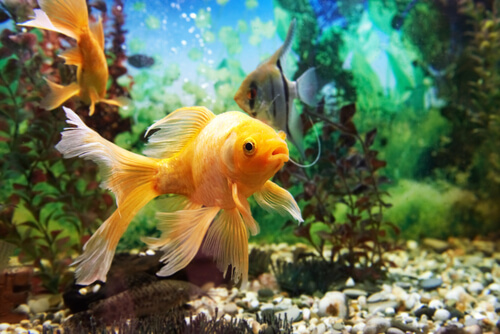
The fantail is one of the oldest varieties of fancy goldfish and can trace its history back to China where at some point it developed as a distinct breed separate from the other varieties of fancy-tailed goldfish which first made an appearance in the Ming dynasty.
Along with the black moor goldfish, it is one of the best fancy goldfish for beginners and its long and storied history shows that this is a fish you can’t really go wrong with.
Fantail Goldfish Colors: Blue, Black, And Calico Fantail Goldfish
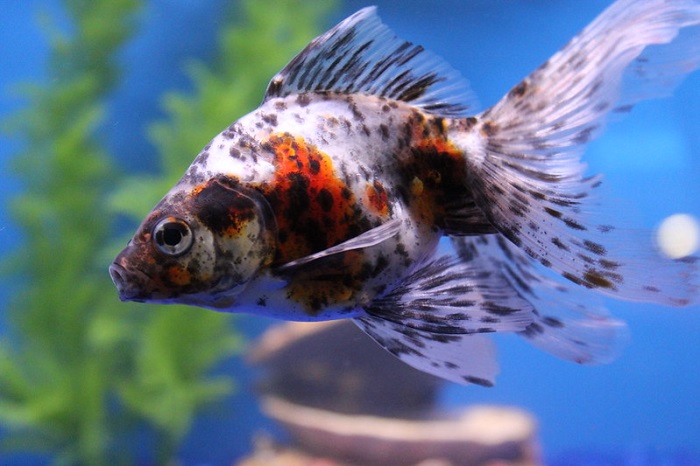
One of the best things about the fantail goldfish is the number of colors it comes in. Do you want to keep fancy goldfish that are eye-catching and exotic but don’t want the high maintenance of some of the more delicate varieties? The sheer variety of fantail goldfish colors may be the answer to your wish!
As to solid colors, the fantail goldfish comes in red, yellow, and orange as its most common variants. However, it can also come in blue, black, or white. These latter colors are particularly striking. The blue fantail goldfish is more like a dusky silver or gray color, but is nevertheless extremely beautiful.
If you want something more exotic, the calico fantail goldfish might be the one for you. These calico fantail goldfish are distinctive because of their dappled pattern and also tend to have eyes that are pure black. Rare variations may in fact have telescope eyes, though these will command a higher price.
How Do I Set Up A Fantail Goldfish Tank?
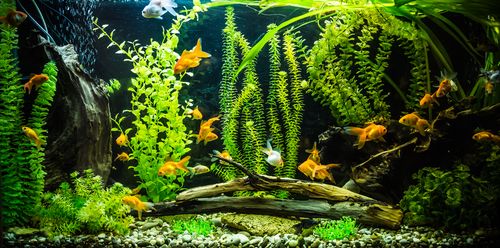
Water parameters:
- Size: 20-30 gallons minimum (76 – 114 liters), and add an extra 10 gallons (38 liters) for each fish like with other egg-shaped goldfish.
- Substrate: Sand or gravel
- Filtration: The rule of thumb is a filter with a flow rate of 4x the tank size. However, a planted tank also helps filter toxins from the water.
- Ammonia and Nitrates: zero
- pH level: 7-8
- Water Hardness: 5-19 dGh
- Temperature: 60-75 F/ 15-23 C
- Lighting: 8-9 hours of light per day. Unlike the black moor or other goldfish with sensitive eyes, an LED light is fine for the Fantail.
- Tank Maintenance: Like all goldfish, which tend to produce a lot of waste, it’s best to change the tank water once a week with a specialist aquarium vacuum such as any of these ones here.
Plants And Decorations
Now you have your tank set up, it’s natural to want to decorate it! However, choosing the right decorations isn’t always easy.
Leave your goldfish plenty of space in the middle of the tank, as egg-shaped fancy goldfish like the fantail can be slower swimmers and need room to maneuver. Likewise, their twin tail, a feature they have from birth, can make it harder to swim. Therefore, crowding the tank with too many decorations can make it hard for your fish. Many goldfish tanks place decorations spaced towards the outside of the tank.
Plants To Include And Avoid In A Fantail Tank
Fantail goldfish, like other kinds of goldfish, are prone to digging up the plants in their tank. However, it tends to be fish that are stressed that fully pull up plants, especially if water quality is not good, or they are lacking something in their diet.
Healthy goldfish will root around the substrate, eat bits of plants, and explore, but they won’t totally destroy them.
Therefore if you plant an aquarium heavily and choose hardy plant species such as anubias, java moss, java fern, or hornwort, there’s no reason why you can’t create a delightful green aquascape as a backdrop to your fantail.
When choosing plants it’s important to know what you’re looking for. If you want plants to quickly fill the tank, avoid slow-growing plants like anubias. If you don’t want to spend the extra effort letting plants take root, you can opt for floating plants instead such as Amazon frogbit, cabomba, or Brazilian pennywort. However, to minimize your fish uprooting your plants, adding a second substrate under the first like lava soil can help them root.
Best Tankmates For Fantail Goldfish
Ideal Tankmates For Your Fantail Tank
The best tankmates for a fantail goldfish tank are other fantails or other fancy goldfish. Fantail goldfish actually enjoy hanging out in groups of four to five. In addition, it’s a delight to see a whole school of these fancy-colored fish as they move through your tank.
The wide variety of fantail goldfish colors means that even if you stick to a tank with only fantails, you can still create a group that is varied and interesting. Pairing darker-colored fantail goldfish such as the black fantail or blue fantail with a calico fantail goldfish or classic red fantail goldfish can give you an eye-popping aquascape that is simple to take care of, hardy, and aesthetically pleasing.
Fish And Invertebrates To Avoid
Even amongst fancy goldfish, there is variation in their ability to swim and see. The fantail goldfish is a relatively hardy fancy goldfish and thus works best with other hardy fancy goldfish such as the black moor. They may outcompete fish with poor eyesight such as the bubble-eye goldfish.
Likewise, the fantail will be outcompeted by faster, flat-bodied fish such as the common or comet goldfish. Small crustaceans such as shrimp can become prey for the fantail, but large snails such as mystery snails should be fine.
Avoid fin-nipping fish! These fish can see the flowing fins of your fantail as a threat and will not hesitate to attack them. Peaceful fish and invertebrates are the best tankmates for fantail goldfish.
What’s Best To Feed My Fantail Goldfish?
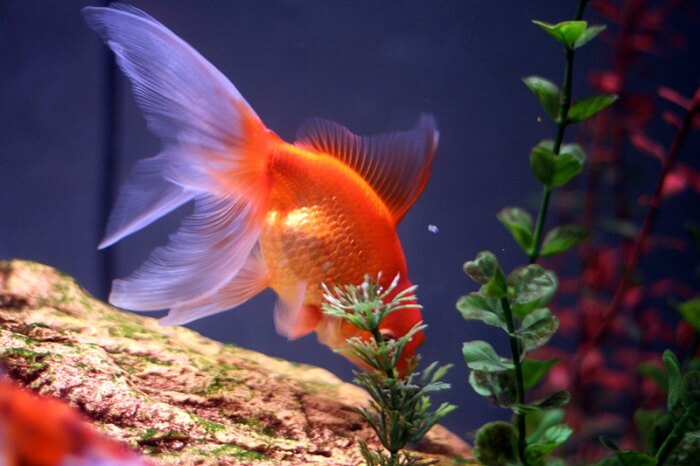
The fantail, like all goldfish, requires a varied diet similar to what its wild ancestors would have eaten. As mentioned above, goldfish were originally kept in ponds by Buddhist monks, where they would have eaten small crustaceans and vegetable matter which fell on the surface of the pond.
To give your fantail a balanced diet you can feed a good quality pellet food as these have all the nutrients your fish needs, in the right amounts. It’s best to opt for sinking pellets as opposed to floating pellets or flakes because this prevents your fantail from gulping down too much air.
To supplement this diet you can add vegetable matter such as lettuce, broccoli, or even algae like duckweed to simulate the plants that goldfish ate in the wild. For protein, you can opt for frozen bloodworms, and tubifex worms or daphnia. Sometimes these are sold live, but due to the fantail’s clumsy swimming ability, they often can’t catch live food.
If your goldfish is not eating, this may be a sign you need to change their diet. However, it can also indicate more serious illness, so it’s best to always take this seriously.
Fantail Goldfish Temperament And Behavior
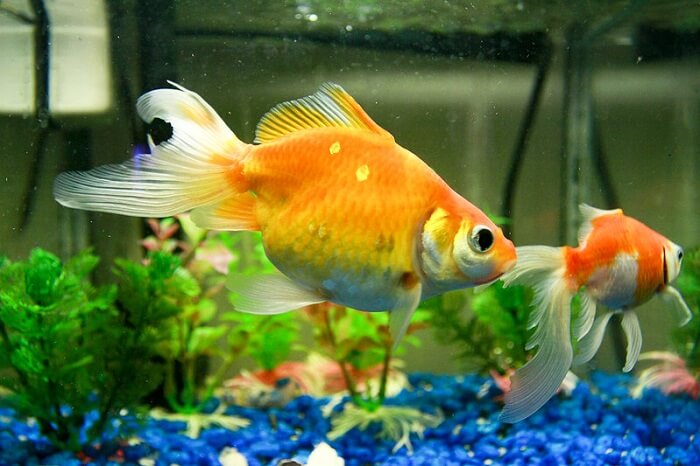
Generally, the fantail is a calm and peaceful goldish with a mild temperament. They have neither the large activity levels of the comet nor are they as shy as the black moor. Instead, they are confident and easy-going goldfish that prefer to be kept in groups of five or more.
You may have heard that goldfish have poor memories. This isn’t true! They are smart enough that they have been used in psychological studies on memory, and your fantail goldfish will remember when and where you feed them and come swimming up to the glass when they expect food. Ultimately, these are intelligent fish that prefer to be kept in a group with their own breed or similar fancy goldfish, as mentioned above in the section on tankmates.
In addition, this species loves to explore for food by rooting around the bottom of the tank and nibbling at the plants which grow there.
Common Pests And Diseases Of Fantail Goldfish
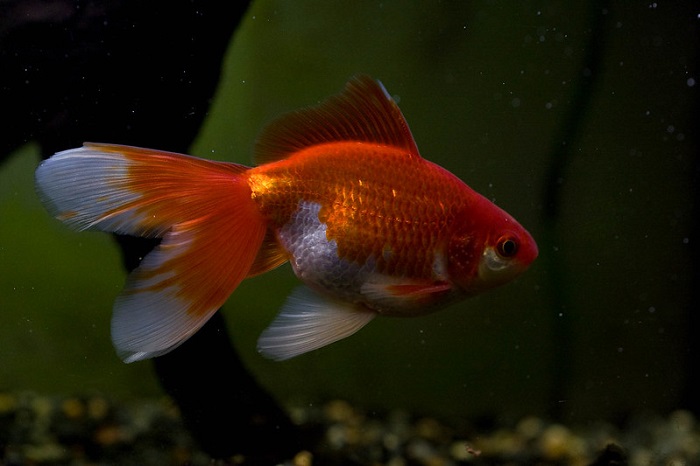
1. Flukes
Flukes are tiny parasitic worms, one millimeter long. If this description makes them sound unpleasant, you would be correct. Flukes are not very nice for your goldfish and yet are one of the most common parasites.
Flukes can be removed via an over-the-counter medication or a saltwater dip, however, it’s good to know how to spot them in the first place. Look out for your fish rubbing or banging up against the sides of the tank. This can indicate flukes in their first stage. However, this can be confused with the symptoms of ich (white spot disease) which is a fungus as opposed to a worm.
To tell if your fish has flukes, look for a variety of signs of illness such as red patches or what may look like wounds or ulcers. Or, there can be black gill spotting but what distinguishes flukes from fin rot or other diseases is that these can be black, white, or red, and the fish will often carry it’s fins strangely (for example, they may tremble).
2. Swim Bladder Disease
Swim bladder infections are common in egg-shaped goldfish. This is because their body shape leaves less size for the swim bladder, an organ responsible for keeping the fish afloat. Sometimes issues with the swim bladder can come from swallowing too much air while feeding, as outlined in the feeding section, but sometimes, it can be the result of a bacterial infection of the swim bladder.
Either way, it’s time to take note if you see your fish struggling to maintain its position in the water column. Your fish may roll from side to side while swimming or indeed sit on the bottom of the tank. It’s best to consult a specialist aquatic vet to see if the infection is bacterial or fungal. Then it can be treated with over-the-counter medication.
3. Bacterial And Fungal Infections
Bacterial and fungal infections have many variations, one of which is ich, or which spot disease. You will see your fish become covered in small white spots, and begin rubbing itself against the tank walls or other objects in the tank. If your goldfish is losing color more severely, this can be a sign of different infections. Alongside parasites, many diseases are caused by poor water quality.
Another infection is fin rot, which can be either bacterial or fungal. If you are unsure about diagnosing these kinds of infections in your fantail, like with swim bladder disease, it’s best to consult a specialist aquatic vet. However, if you are certain as to whether you are dealing with a bacterial or fungal infection, many over-the-counter cures can be purchased in your local aquatics store, complete with instructions.
How Do I Breed My Fantail Goldfish?
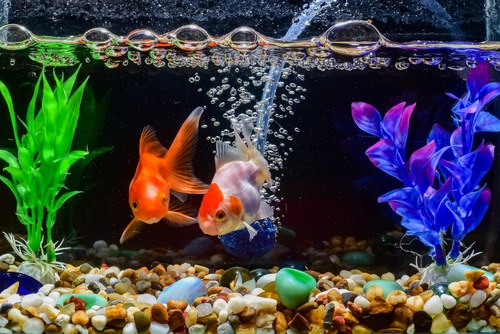
You might have thought breeding goldfish was for experts only. But after a while, you may find that you have enough fishkeeping experience that you feel confident breeding them and want to try this as your next step. If that’s the case, here’s a handy outline:
- Prepare all your equipment. Use multiple tanks so you can separate the male and female from the eggs and each other if desired. This is because goldfish eat their eggs. it helps to have a tank thermometer, too. Add the male and female to the spawning tank
- Now, you need to create the sense of a cold snap to mimic the winter period before early spring, which is when goldfish are most fertile and the rising temperatures trigger spawning. Lower tank temperature to 54 degrees F (12 C) and then raise it to 68-73 Celcius (20-23 F)
- Now you’re waiting for your goldfish to spawn. having a spawning mop is useful for the eggs to attach to. Overall, you should be able to tell when your fish is ready due to the male fish growing white tubercles on his gills, indicating he is prepared to spawn.
- After this you will see your male chase your female around the tank until she drops her eggs.
- Remove both fish from the tank afterward. This is because goldfish eat their eggs.
- Once the fry hatch, you can feed them specialist fry food. Brine shrimp is also a possibility, but ensure you get it from a reputable aquatics center and wait 2-3 weeks until the fry is big enough. This ensures not only that it is free from parasites but also that they are able to eat it.
Final Thoughts
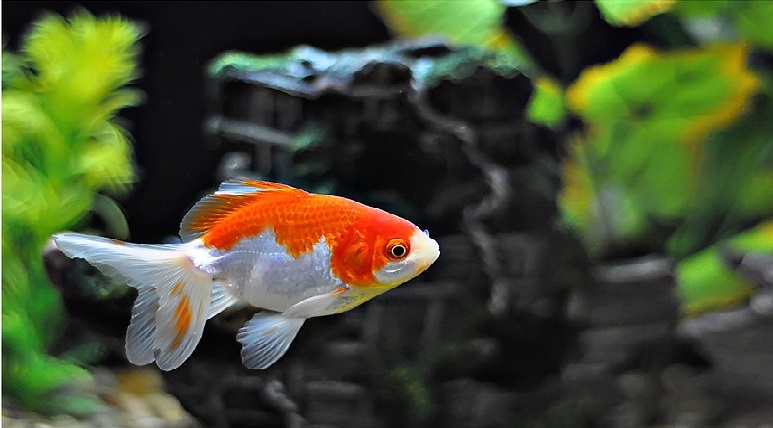
The fantail goldfish is a great fancy goldfish for beginners. It’s surprisingly varied in terms of color and tends to be hardy compared to other fancy goldfish, living for a long time. The calico fantail offers a great option if you want an ornamental fish that isn’t hard to look after, and the other varieties allow you to create a beautiful aquarium set up with a group of striking and colorful fish. Plus, the fantail’s easy-to-care-for nature means children will also love looking after this curious and intelligent fish.


